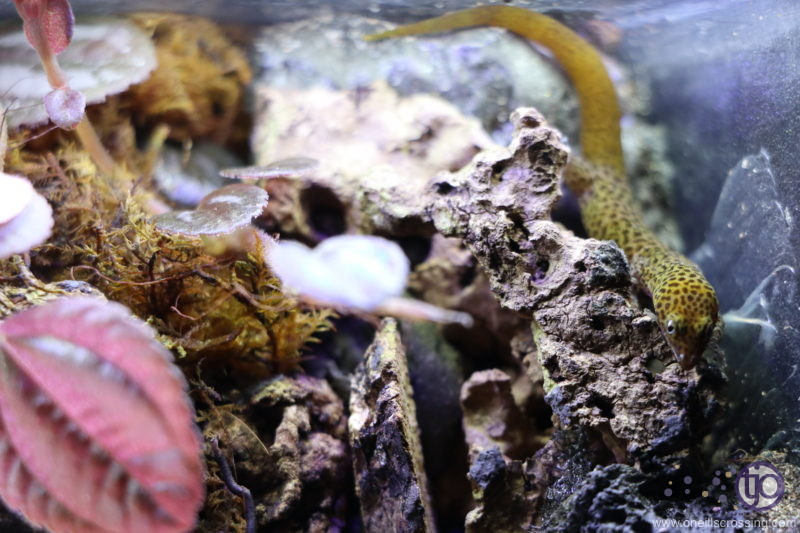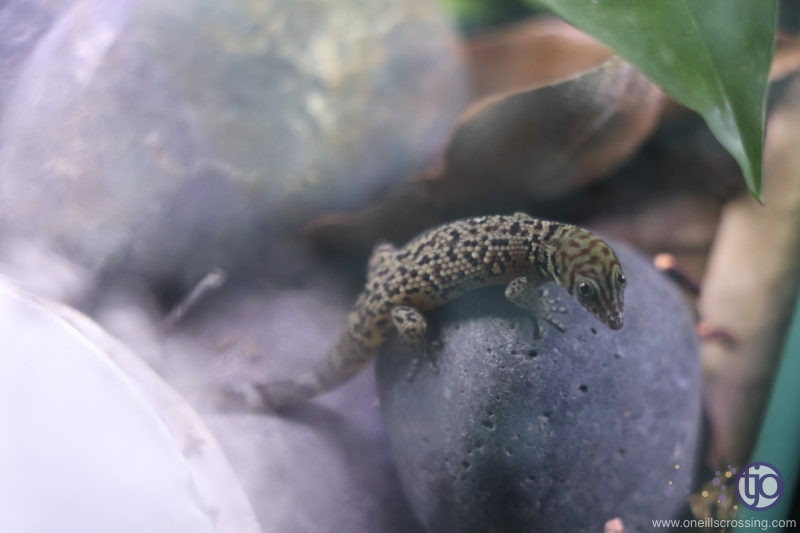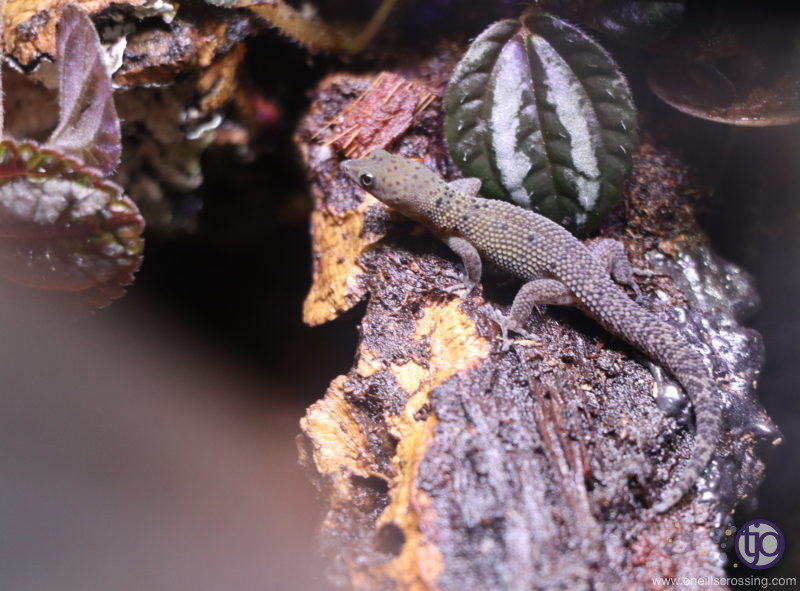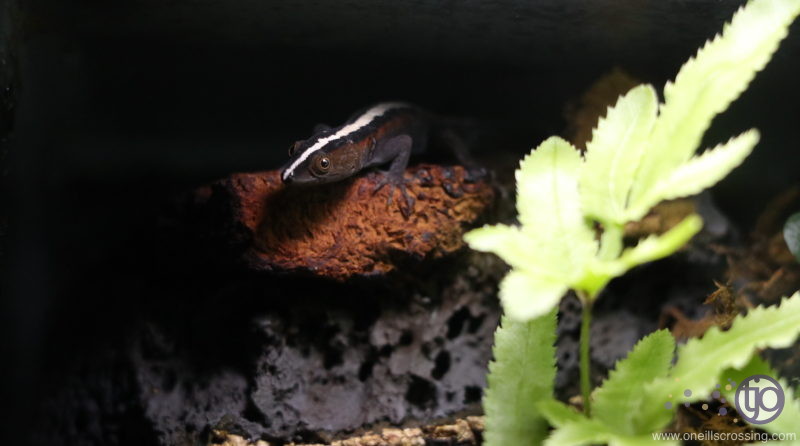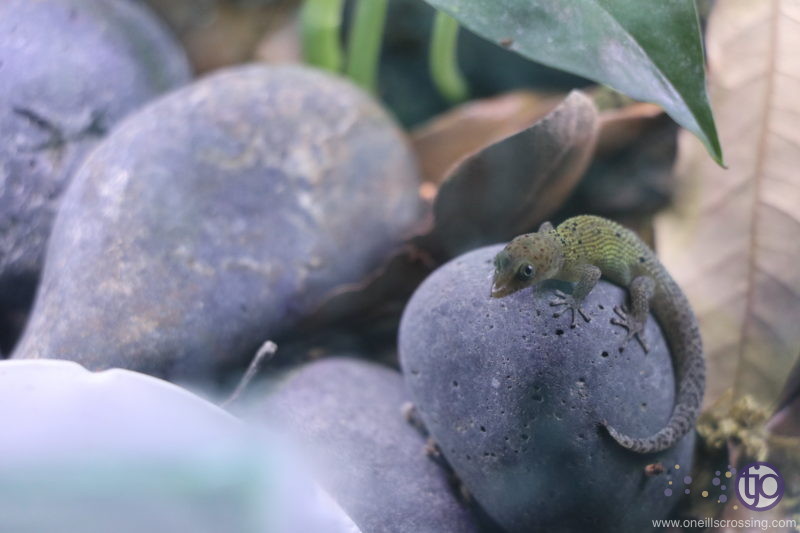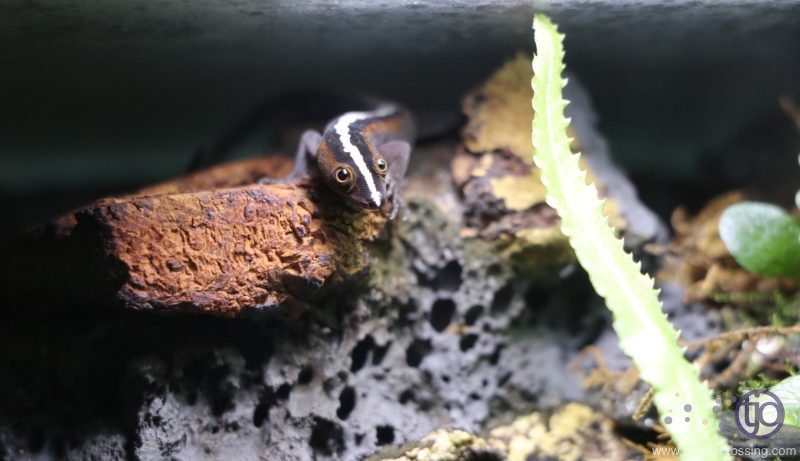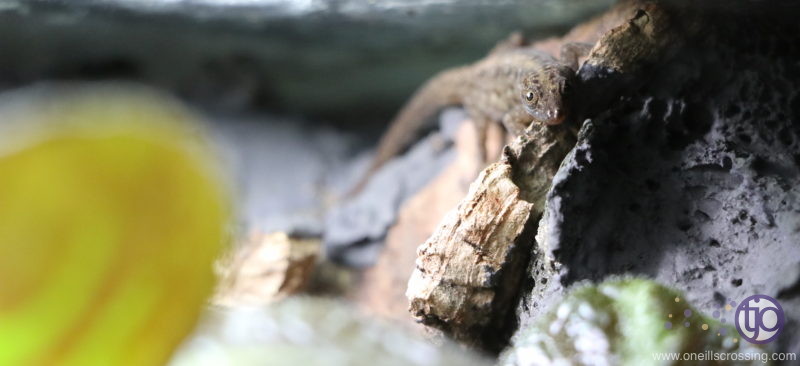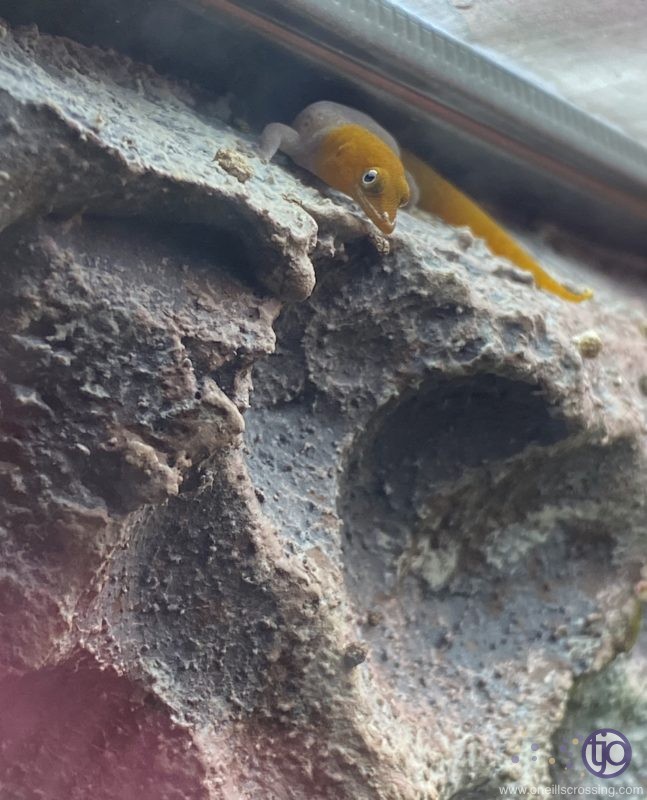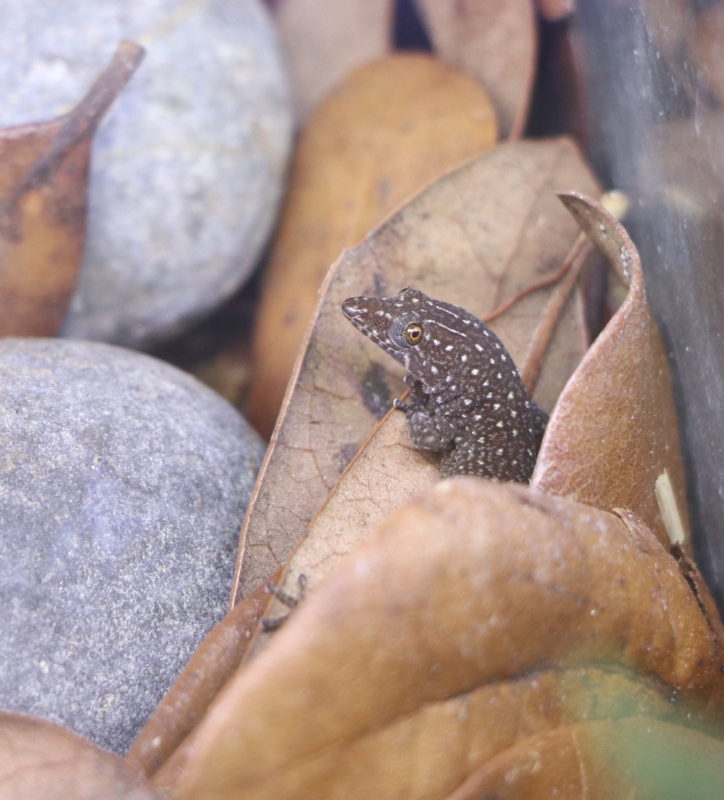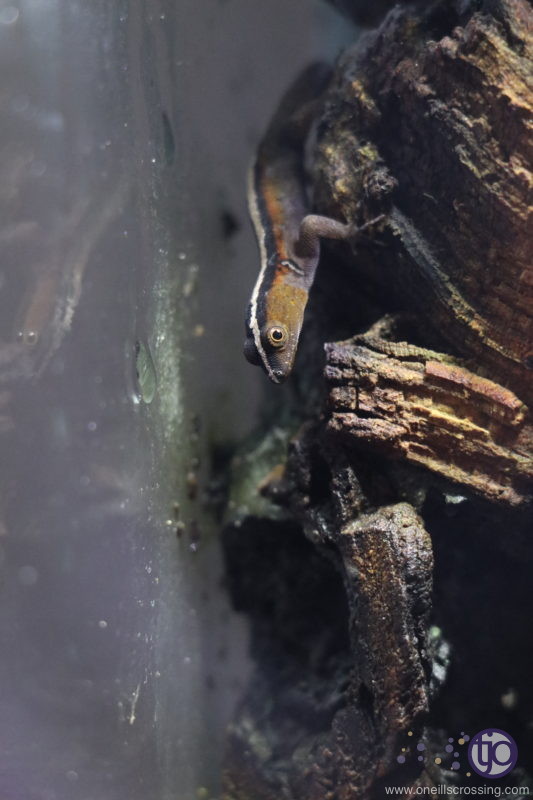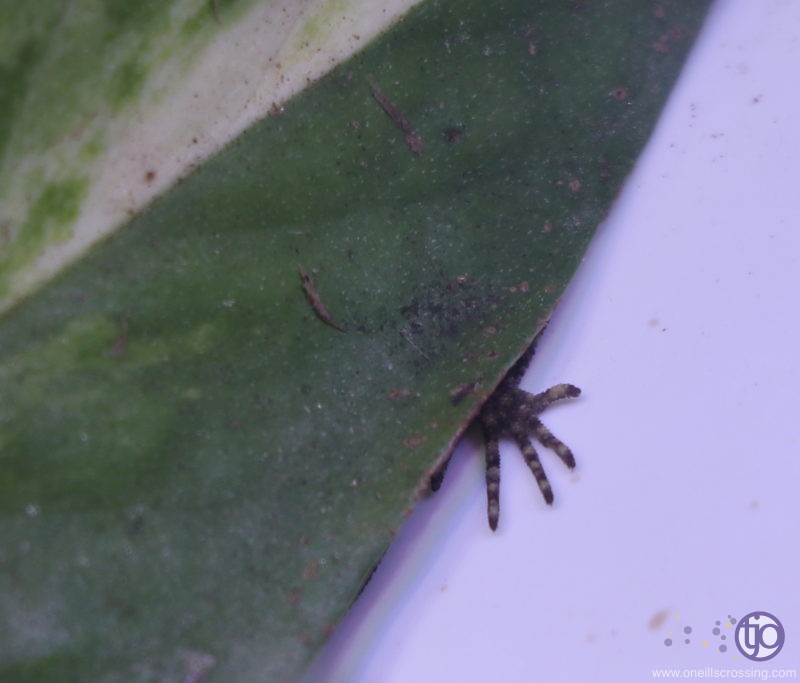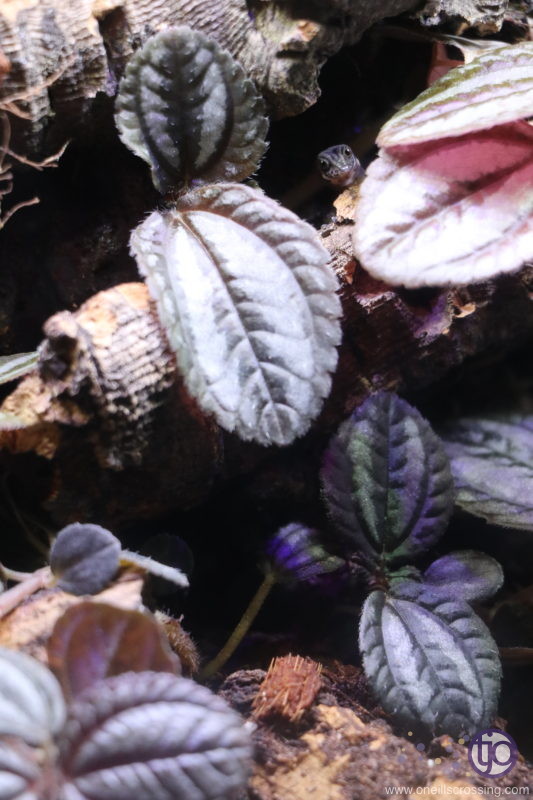
I got into the world of microgeckos early on during my frog keeping days. Initially I purchased a pair of Sphaerodactylus nigropunctatus granti to patrol the upper reaches of a larger vivarium to keep the stray fly population down. Over time, we added other species as we found their captivating gaze so engaging. Currently we keep:
- Sphaerodactylus nigropunctatus granti | 2015 | 1.1 | Cuba, Bahamas | producing
- Sphaerodactylus nigropunctatus ocajul | 2022 | 0.0.3 | Cuba, Bahamas
- Sphaerodactylus rosaurae | 2022 | 1.1 | Honduras
- Gonatodes ocellatus | 2022 | 1.1 | Trinidad and Tobago | producing
- Gonatodes antillensis | 2022 | 1.1 | Venezuela | producing
We’ve also encountered awesome fellow hobbyists that have gifted us additional microgeckos that have expanded our collection. Luckily with their meager housing demands and food sources consistent with the other animals we keep, we can easily accommodate them!
- Sphaerodactylus argus | 2022 | 0.0.1 | Cuba, Jamaica
- Gonatodes vittatus | 2022 | 1.1 | Colombia, Guyana; Trinidad and Tobago, Venezuela | producing
- Gonatodes albogularis fuscus | 2022 | 0.0.3 | pretty much everywhere 🙂
- Ebenavia inunguis | 2022 | 0.0.1 | Madagascar
There are quite a few wonderful sources of information on microgeckos out there. One of the most useful is dwarfgeckos.com. There are great pages for each of the species I keep over there, so have a look starting at the Sphaerodactylus and Gonatodes pages.
microgecko behavior
Given their small size, most of the species I keep are reclusive. They are wary of you as you enter the room, and often dart into a hiding place as you approach their vivarium. There are a few exceptions for me, most notably with my G. vittatus and G. ocellatus. These species are consistently out for me, even in my presence. I’m hoping over time that some other species warm up to me, but I have been keeping my granti for 8 years, and they still hate me.
microgecko vivarium design
I have over 10 years of experience building vivariums for dart frogs. I have leveraged this experience to develop custom vivariums for my microgecko collection. I put together an extensive write up on my build process for scratch built small scale vivariums. To date I have built six of these enclosures, and I will likely be adding more over time. In general, a pair of microgeckos can do well in a 12″x12″x18″ commercially available vivarium. The dimensions of my custom build models are slightly smaller, though with my hardscaping techniques I still can provide ample space for a pair in a 10″x10″x 16″ footprint. These custom vivs cost me under $25 to make, so they are much more reasonable for me than commercial solutions.
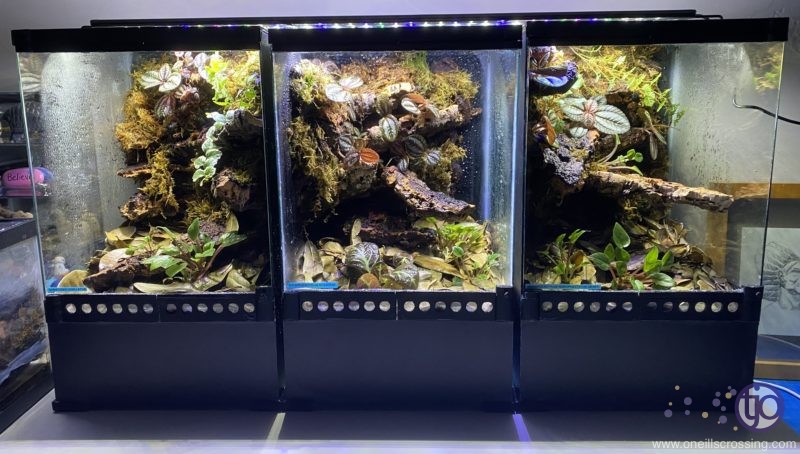
feeding microgeckos
I got into microgeckos originally because they can share a similar diet to the dart frogs that I keep. I maintain mine with a steady diet of vitamin dusted melanogaster fruit flies, and occasionally bean beetles for the adults of larger species that I keep. I also stock my vivariums with springtails and dwarf isopods. The dwarf isopods are a good supplemental food source.
breeding microgeckos
If you provide the right conditions, your geckos will pretty much breed. The big challenge is either finding the eggs, or catching the hatchlings. They are TINY, and FAST. In general, I try to keep all my pairs of microgeckos in naturalistic vivariums, and I do my best to capture their offspring as fast as I can. Typically the offspring are tolerated by the adults, but some pairs, like my G. vittatus, bully any offspring in their environments. However, other species, like my Sphaerodactylus nigropunctatus granti (36″x18″x36″) and Gonatodes ocellatus (18″x18″x24″) seem to tolerate their offspring fairly well in these larger setups. Note the granti cohabitate with a large colony of Ranitomeya fantastica nominal dart frogs.
One curious anecdote; my first foray into microgeckos was with my granti pair. They were housed in a large custom built vivarium for over 6 years, occasionally depositing eggs, but in general, with little success in terms of producing offspring. Over time the cork bark hardscaping of that viv broke down, forcing a teardown and move of the animals to a new setup. I built a large upper shelf for my bromeliads that the granti had shown a preference for in their first viv. This gave them more horizontal space. After about a year in the new setup they started producing offspring regularly, and now I’m up to four juveniles. So a change of scenery after about 6 years resulted in much more success.
microgecko photos
Here are some random photos of the various species I keep. Some of these photos may pop up on the species sub pages on the site, but who doesn’t love looking at these tiny, engaging critters?
